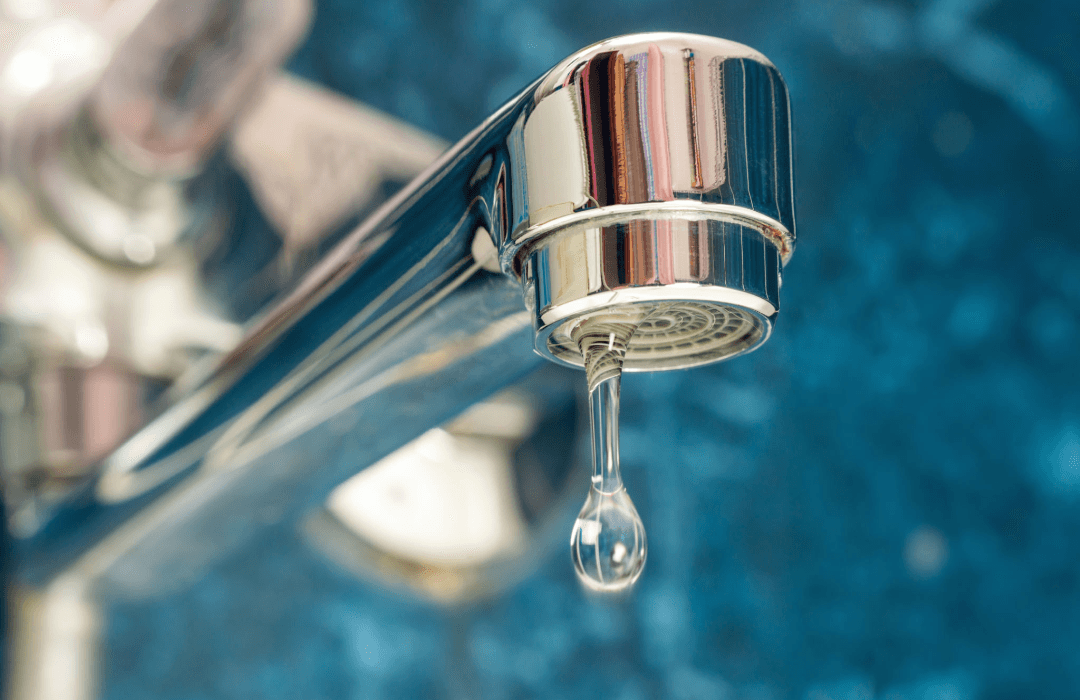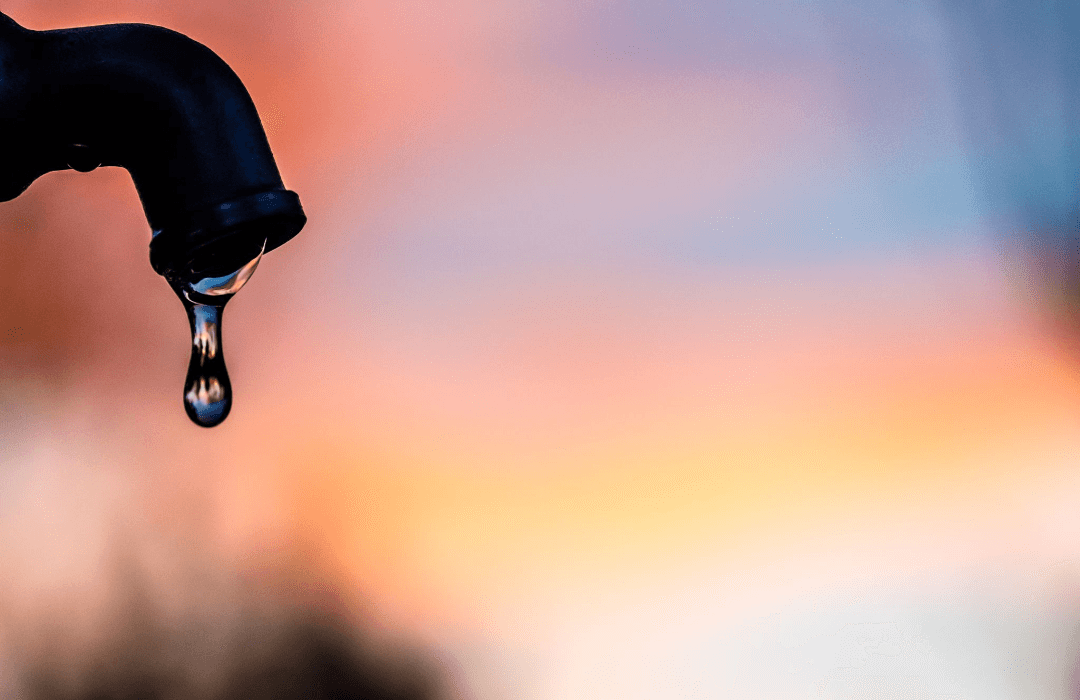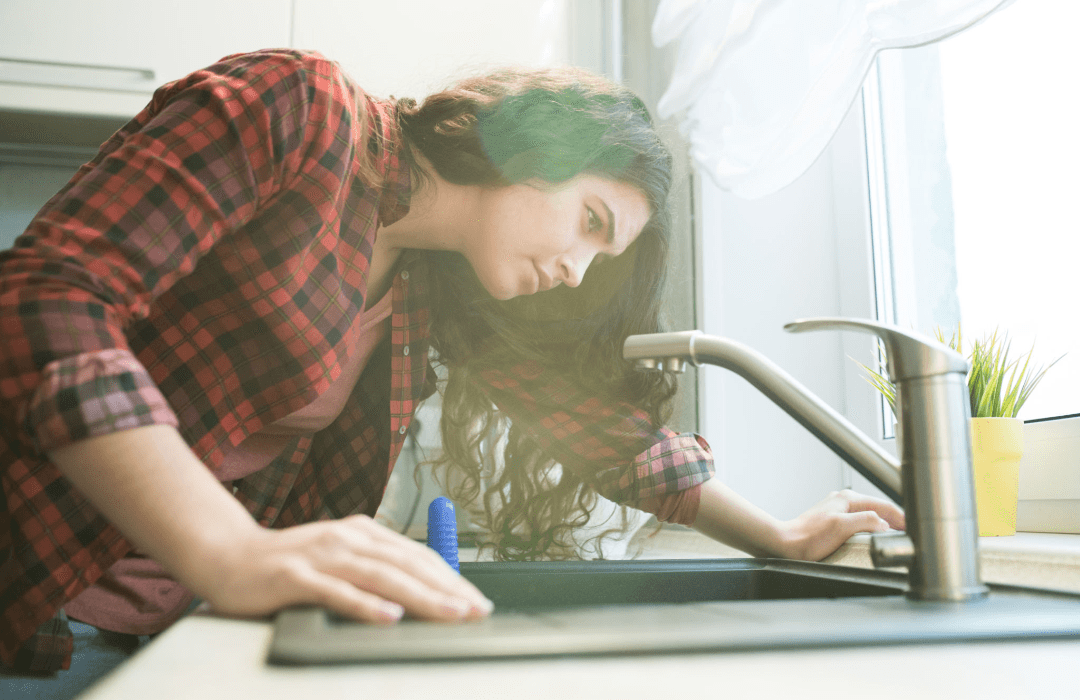A dripping faucet might seem like a minor annoyance, easily ignored in the hustle and bustle of daily life. However, this small leak can have a surprising impact on your wallet and the environment. Many homeowners underestimate the cumulative effect of a constant drip, unaware of the gallons of water silently going to waste.
Today we’ll look at the true cost of a dripping faucet, from its effect on your water bill to broader environmental implications. We’ll also provide practical advice on identifying, fixing, and preventing leaks, helping you save money and contribute to water conservation efforts. Join us as we uncover the hidden costs behind that persistent drip and learn how addressing this issue can significantly benefit your household and beyond.
Understanding the Drip
Before we can address the impact of a dripping faucet, it’s crucial to understand what causes this common household issue and how to identify it. By recognizing the signs and causes of a drip, you’ll be better equipped to tackle the problem head-on and prevent future occurrences.
Common Causes of Dripping Faucets
One of the most frequent culprits behind a dripping faucet is a worn-out washer or O-ring. These small components create a watertight seal when you turn off the tap. Over time, they can become hard, torn, or dislodged, allowing water to seep through even when the faucet is closed. Mineral buildup from hard water can also contribute to washer deterioration, accelerating the wear and tear process.
Another common cause is corrosion or damage to the valve seat. The valve seat is the connection between the faucet and the spout. When this part corrodes or becomes damaged, it can lead to leaks around the spout area. This issue is common in older homes or areas with hard water. Regular maintenance and timely replacement of these parts can often resolve the issue and prevent future drips.
How to Identify a Dripping Faucet
The most straightforward way to identify a dripping faucet is through visual inspection. Look for water droplets forming and falling from the spout when the faucet is turned off. In some cases, you might notice water accumulating around the base of the faucet or in the sink. Don’t forget to check under the sink as well. Leaks can sometimes occur in the pipework or connections below, which may not be immediately visible but can still contribute to water waste and potential damage.
If you can’t visually confirm a drip, listen carefully for the sound of water falling. This method can be particularly useful for identifying slow drips or leaks in less visible areas. Try checking at night when your home is quieter, making it easier to hear subtle sounds. Remember that not all drips make an audible sound, especially if water is leaking into the overflow drain or along the outside of the pipe. Therefore, it’s important to combine listening with visual inspections for a thorough check.

Calculating Water Waste
Many homeowners are shocked to learn just how much water a seemingly insignificant dripping faucet can waste over time. In this section, we’ll break down the numbers to give you a clear picture of the water loss caused by this common household issue. Understanding the scale of waste can be a powerful motivator for addressing the problem promptly.
How Much Water a Drip Wastes Per Day
A single dripping faucet can waste a surprising amount of water in just 24 hours. The rate of water loss depends on the speed of the drip, but even a slow leak can add up quickly. For instance, a faucet that drips once per second can waste approximately 5 gallons of water per day. That’s enough to fill a large watering can or flush a toilet several times.
If the drip is faster, the waste increases dramatically. A steady stream from a faucet can waste up to 100 gallons or more in a single day. This is equivalent to multiple showers or loads of laundry, highlighting how a dripping faucet can significantly impact your water usage.
Monthly and Yearly Water Waste Estimates
When we extend these daily figures to a month or a year, the numbers become even more alarming. A faucet dripping at one drop per second can waste around 150 gallons in a month. Over a year, this adds up to approximately 1,800 gallons – enough to fill a small swimming pool.
For faster drips or small streams, the waste can be staggering. A faucet leaking at one gallon per hour can waste 24 gallons a day, 720 gallons a month, and a whopping 8,640 gallons a year. This volume of water could meet the average person’s drinking water needs for over a decade. These figures underscore why fixing a dripping faucet should be a priority for any water-conscious homeowner.
The Financial Impact
While the environmental impact of a dripping faucet is significant, the effect on your wallet can be equally startling. Many homeowners underestimate how much a small leak can cost over time. In this section, we’ll break down the financial implications of ignoring that persistent drip, providing figures to illustrate the importance of prompt repairs.
Estimating the Cost on Your Water Bill
A dripping faucet might seem like a minor issue, but it can lead to a noticeable increase in your water bill. The exact cost depends on your local water rates and the severity of the leak. However, even a slow drip can add up quickly. For example, if your water costs $0.01 per gallon, a faucet dripping at one drop per second could add about $6 to your monthly bill.
For faster leaks, the financial impact becomes more significant. A faucet leaking at one gallon per hour could increase your water bill by $70 or more per month, depending on your local rates. This extra expense might go unnoticed month-to-month, but over time, it represents a substantial unnecessary cost that could be easily avoided by fixing the dripping faucet.
Long-Term Financial Consequences
The true cost of a dripping faucet extends beyond just your water bill. If left unaddressed, a small leak can escalate into a larger plumbing issue, potentially leading to expensive repairs. Water damage from persistent leaks can affect flooring, cabinetry, and even the structural integrity of your home, resulting in costly renovations.
Moreover, a dripping faucet contributes to overall water waste, which can lead to increased community water rates over time. As water becomes scarcer and more expensive to treat and distribute, these costs are often passed on to consumers. By fixing your dripping faucet promptly, you’re saving money on your bill and contributing to community-wide water conservation efforts that can help keep rates stable for everyone in the long run.

Environmental Consequences
While the financial impact of a dripping faucet is significant, the environmental consequences are equally important. Water is a precious resource, and even small leaks contribute to larger issues of water scarcity and energy waste. Let’s explore how your dripping faucet affects the environment and why addressing this issue is crucial for conservation efforts.
Water Scarcity and Conservation
A dripping faucet may seem insignificant, but when multiplied across millions of households, the impact becomes substantial. Every drop wasted contributes to the growing problem of water scarcity, which affects regions worldwide. In areas prone to drought or with limited water supplies, conserving water is particularly crucial.
By fixing a dripping faucet, you’re directly contributing to water conservation efforts. The thousands of gallons saved per year in your household alone can make a difference. When combined with community-wide efforts, the impact is significant, helping preserve water resources for future generations and supporting local ecosystems.
Energy Waste in Water Treatment and Distribution
The environmental impact of a dripping faucet extends beyond just water waste. Consider the energy used in treating and distributing water to our homes. Water treatment plants consume significant electricity to purify water and pump it through distribution systems. When we waste water through dripping faucets, we’re also wasting the energy used to process and deliver that water.
Hot water leaks are particularly problematic from an energy perspective. If your dripping faucet is leaking hot water, you’re wasting both water and the energy used to heat it. This unnecessary energy consumption contributes to increased greenhouse gas emissions. By fixing a dripping faucet, especially one leaking hot water, you’re helping to reduce energy waste and combat climate change in your own small but meaningful way.
DIY Fixes for Dripping Faucets
Many homeowners are surprised to learn that fixing a dripping faucet can often be a straightforward DIY project. With the right tools and patience, you can potentially save money on plumbing services and address the issue quickly. In this section, we’ll guide you through some basic repairs you can attempt to stop that annoying drip.
Tools You’ll Need
Before tackling a dripping faucet repair, it’s important to gather the necessary tools. Most faucet repairs can be completed with a few basic items: an adjustable wrench, screwdrivers (both flathead and Phillips), pliers, and replacement parts such as washers or O-rings. You may also need a basin wrench for hard-to-reach nuts under the sink.
Having these tools on hand will make the repair process smoother and more efficient. Remember to turn off the water supply to the faucet before beginning any repair work. It’s also a good idea to cover the drain to prevent small parts from falling in during the repair process.
Step-by-Step Guide for Simple Repairs
The most common cause of a dripping faucet is a worn-out washer or O-ring. To replace these, start by removing the faucet handle. This usually involves removing a decorative cap and unscrewing a retaining nut. Once the handle is off, you can access the stem and remove the old washer or O-ring.
Replace the worn part with a new one of the same size and type. Reassemble the faucet in reverse order, taking care not to overtighten any components. Turn the water supply back on and test the faucet. If the drip persists or you encounter difficulties during the repair process, it’s best to seek professional help.
While DIY repairs can be effective for simple issues, more complex problems with your dripping faucet may require expert attention. If you’re unsure at any point or if the drip continues after your repair attempt, don’t hesitate to contact Service by Scott. Our team of experienced plumbers in Woodville, Texas, has been solving dripping faucet issues for over 30 years. We’re always ready to help, whether it’s a stubborn leak or a more complicated plumbing problem.

When to Call a Professional
While many dripping faucet issues can be resolved with simple DIY fixes, there are times when professional expertise is necessary. Recognizing when a problem is beyond your skill level can save you time, frustration, and potentially costly mistakes. In this section, we’ll discuss the signs that indicate it’s time to call in a professional plumber like Service by Scott.
Signs that Indicate a More Serious Problem
Sometimes, a dripping faucet can be a symptom of a larger plumbing issue. If you notice unusually low water pressure accompanying the drip, or if the water has a strange color or odor, these could be signs of problems within your plumbing system. Additionally, if you hear unusual noises like banging or whistling when you turn on the faucet, it might indicate issues with water pressure or air in the lines.
Another red flag is if the dripping persists after you’ve attempted repairs, or if you notice water stains on walls or ceilings near the faucet. These signs could point to hidden leaks or more complex issues that require professional attention. If you’re dealing with an older home in Tyler County, the plumbing system might have unique challenges that are best addressed by experienced plumbers.
Benefits of Professional Plumbing Services
When you call a professional service like Service by Scott for your dripping faucet, you’re not just getting a quick fix – you’re investing in expertise and peace of mind. Our licensed plumbers have the tools and knowledge to diagnose and solve complex issues that might be causing your faucet to drip. We can identify potential problems before they become major issues, saving you from costly repairs.
Professional plumbers can also ensure that repairs are done correctly and up to code, which is particularly important for older homes or if you plan to sell your property. At Service by Scott, we stand behind our work with warranties and guarantees, giving you confidence that your dripping faucet problem will be resolved effectively. Plus, with our 24/7 emergency service, you can rest assured that help is always available, no matter when your plumbing decides to act up.
Conclusion
A dripping faucet is more than just an annoyance – it’s a drain on your finances and the environment. We’ve explored how even a small leak can waste thousands of gallons of water annually, significantly impacting your water bill and contributing to larger issues. The energy waste from treating and distributing this wasted water further compounds the environmental impact. While some dripping faucets can be fixed with simple DIY repairs, others may indicate more serious plumbing issues that require professional attention.
Don’t let a dripping faucet continue to waste your money and precious resources. If you’re facing persistent leaks or are unsure about tackling repairs yourself, it’s time to call in the experts. Service by Scott has serviced Tyler County and surrounding areas for over 30 years, providing top-notch plumbing solutions for homes and businesses. Our experienced team is ready to diagnose and fix your dripping faucet quickly and efficiently, ensuring long-lasting results. Contact Service by Scott today – let us turn your drips into savings and contribute to a more water-efficient community.
FAQs
How much water does a dripping faucet waste?
A faucet dripping at one drop per second can waste about 5 gallons per day, or 1,800 gallons per year.
Can a dripping faucet increase my water bill significantly?
Yes, depending on your local water rates, a dripping faucet can add $6 to $70 or more to your monthly water bill.
Is it always necessary to call a plumber for a dripping faucet?
Not always. Simple issues like worn washers can often be fixed DIY, but persistent or complex problems should be handled by professionals like Service by Scott.
How often should I check my faucets for leaks?
It’s a good idea to inspect your faucets monthly and thoroughly check all household plumbing fixtures at least twice a year.
Can a dripping faucet cause water damage to my home?
Yes, over time, a persistent leak can lead to water damage in cabinets, flooring, and even walls, potentially resulting in costly repairs.

